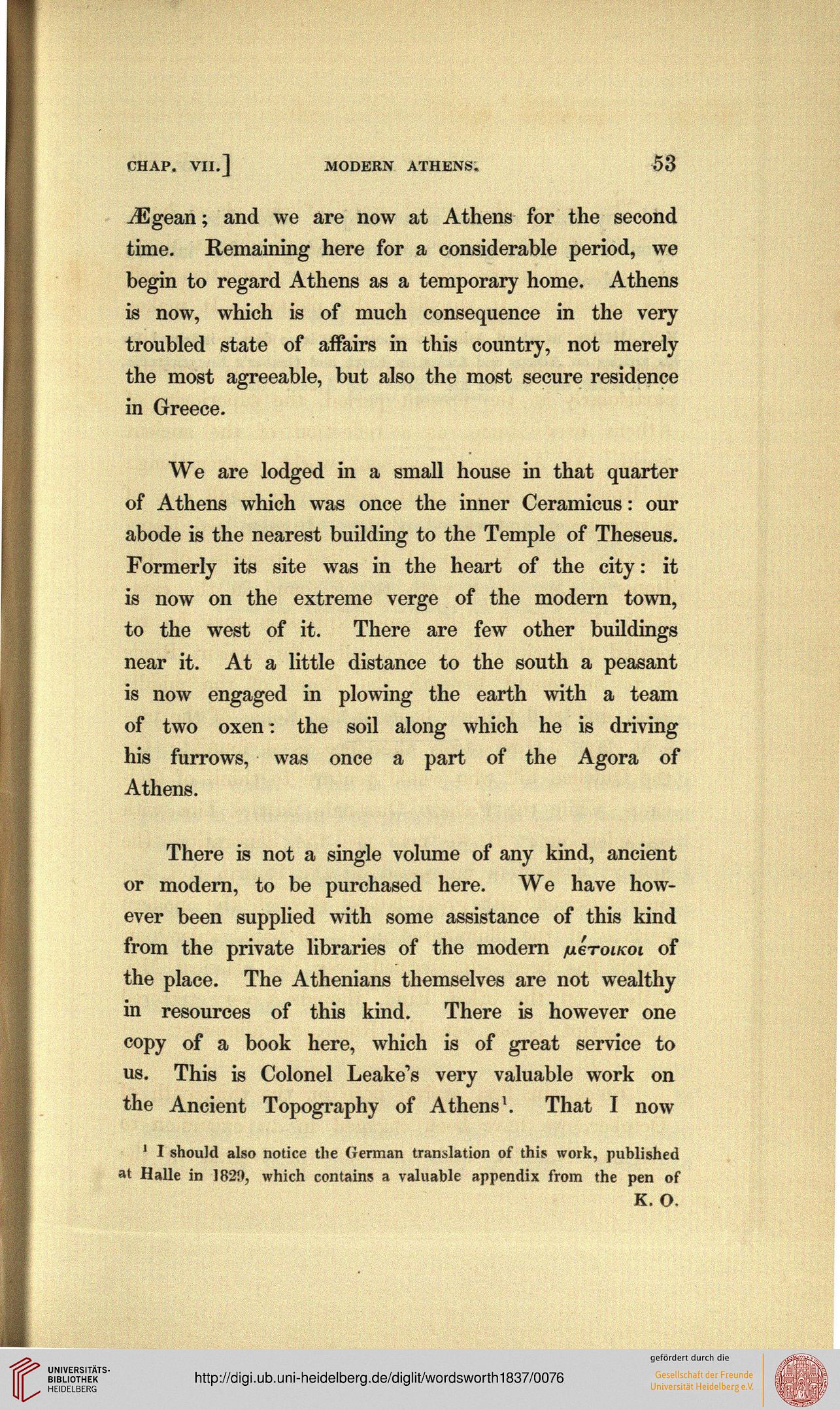CHAP. VII.] MODERN ATHENS. 53
jEgean; and we are now at Athens for the second
time. Remaining here for a considerable period, we
begin to regard Athens as a temporary home. Athens
is now, which is of much consequence in the very-
troubled state of affairs in this country, not merely
the most agreeable, but also the most secure residence
in Greece.
We are lodged in a small house in that quarter
of Athens which was once the inner Ceramicus: our
abode is the nearest building to the Temple of Theseus.
Formerly its site was in the heart of the city: it
is now on the extreme verge of the modern town,
to the west of it. There are few other buildings
near it. At a little distance to the south a peasant
is now engaged in plowing the earth with a team
of two oxen: the soil along which he is driving
his furrows, was once a part of the Agora of
Athens.
There is not a single volume of any kind, ancient
or modern, to be purchased here. We have how-
ever been supplied with some assistance of this kind
from the private libraries of the modern /ulstoikoi of
the place. The Athenians themselves are not wealthy
in resources of this kind. There is however one
copy of a book here, which is of great service to
us. This is Colonel Leake's very valuable work on
the Ancient Topography of Athens1. That I now
' I should also notice the German translation of this work, published
at Halle in 1829, which contains a valuable appendix from the pen of
K. O.
jEgean; and we are now at Athens for the second
time. Remaining here for a considerable period, we
begin to regard Athens as a temporary home. Athens
is now, which is of much consequence in the very-
troubled state of affairs in this country, not merely
the most agreeable, but also the most secure residence
in Greece.
We are lodged in a small house in that quarter
of Athens which was once the inner Ceramicus: our
abode is the nearest building to the Temple of Theseus.
Formerly its site was in the heart of the city: it
is now on the extreme verge of the modern town,
to the west of it. There are few other buildings
near it. At a little distance to the south a peasant
is now engaged in plowing the earth with a team
of two oxen: the soil along which he is driving
his furrows, was once a part of the Agora of
Athens.
There is not a single volume of any kind, ancient
or modern, to be purchased here. We have how-
ever been supplied with some assistance of this kind
from the private libraries of the modern /ulstoikoi of
the place. The Athenians themselves are not wealthy
in resources of this kind. There is however one
copy of a book here, which is of great service to
us. This is Colonel Leake's very valuable work on
the Ancient Topography of Athens1. That I now
' I should also notice the German translation of this work, published
at Halle in 1829, which contains a valuable appendix from the pen of
K. O.




